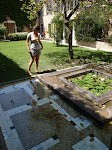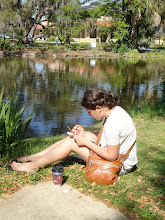

 So I leave in two days. Friday morning. With the decision made final about a month ago to travel to New Orleans to do site research and experience the city, it became clear that I needed to make a bold statement about the direction of my project. The most recent crit also told me this. In order to narrow down my concepts, because up to this point my project has been described as a "patchwork of mini projects", I gave in to declaring a much more specific topic within weathering. Water. Weathering by water. This does incorporate the sun/temperature as well, but looking back I have been looking at the effects of water specifically on materials, but never wanted to come out and state I was only working with water. Choosing the site in New Orleans makes it perfectly clear that sticking to water is a good direction. Water lines, flood lines, which in turn talk about datum lines and the ability to trace these types of environmental occurances is what interests me. Of course this introduces my research to the levee systems employed in the city and how they work to keep water out, or not. There are natural levees, which the city was originally built upon, and then there are artificial, or man made, levees. Floods walls and revetments accompany these man made levees. Floods walls rise at least 15' to 25' higher than the natural levees.
So I leave in two days. Friday morning. With the decision made final about a month ago to travel to New Orleans to do site research and experience the city, it became clear that I needed to make a bold statement about the direction of my project. The most recent crit also told me this. In order to narrow down my concepts, because up to this point my project has been described as a "patchwork of mini projects", I gave in to declaring a much more specific topic within weathering. Water. Weathering by water. This does incorporate the sun/temperature as well, but looking back I have been looking at the effects of water specifically on materials, but never wanted to come out and state I was only working with water. Choosing the site in New Orleans makes it perfectly clear that sticking to water is a good direction. Water lines, flood lines, which in turn talk about datum lines and the ability to trace these types of environmental occurances is what interests me. Of course this introduces my research to the levee systems employed in the city and how they work to keep water out, or not. There are natural levees, which the city was originally built upon, and then there are artificial, or man made, levees. Floods walls and revetments accompany these man made levees. Floods walls rise at least 15' to 25' higher than the natural levees.The images above, the nearest on in particular, are images found online of transverse sections through the city, from Lake Pontchartrain to the Mississippi River. The nearest was the first I came across and it seemed out of scale and inaccurate, almost unbelieveable. After continuing some research on similar sections, I found that it does not seem so inaccurate. The others posted look very similar. I hope to attempt to compile my own transverse section while I'm there.




No comments:
Post a Comment